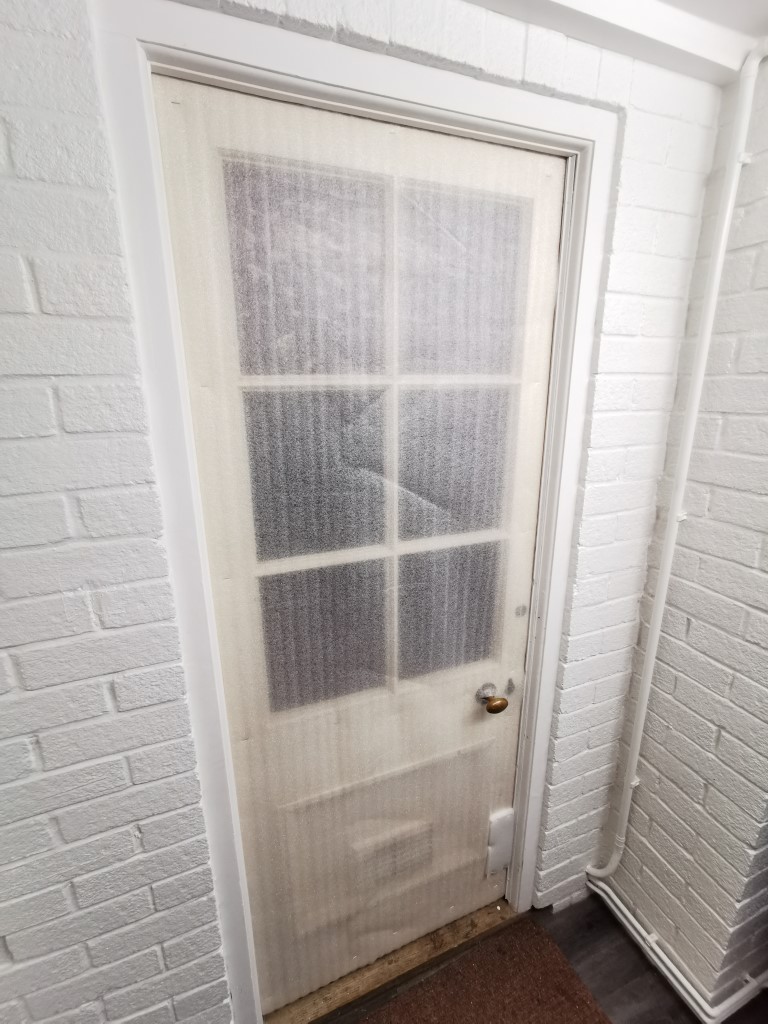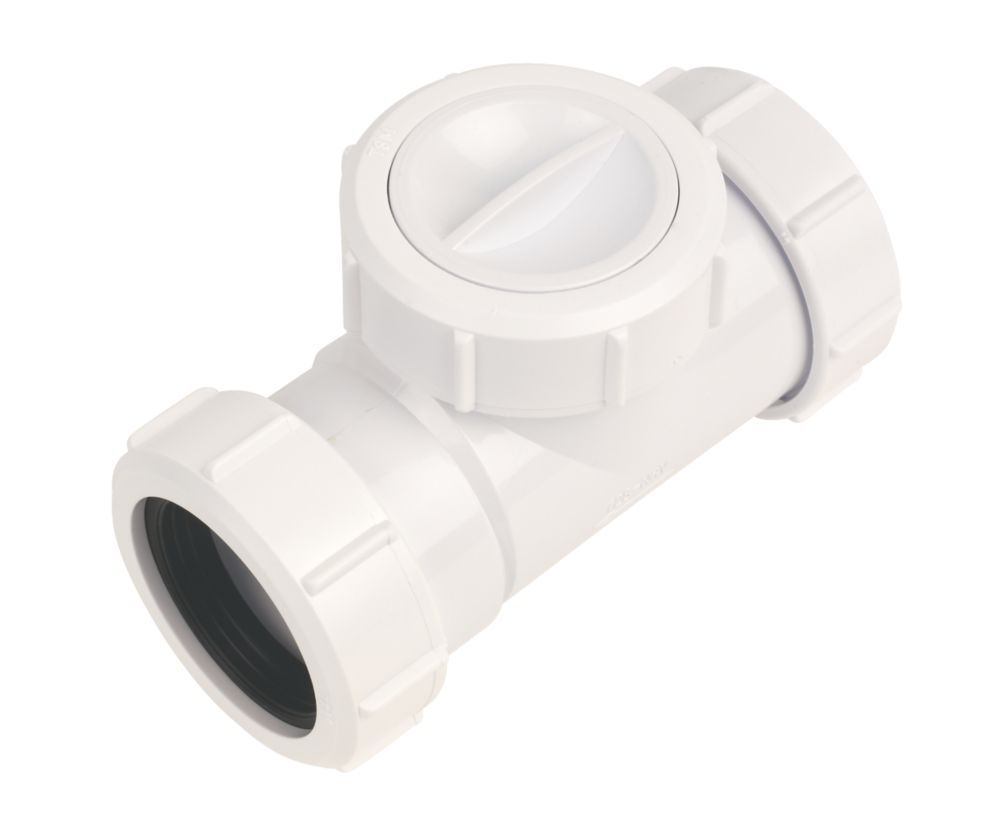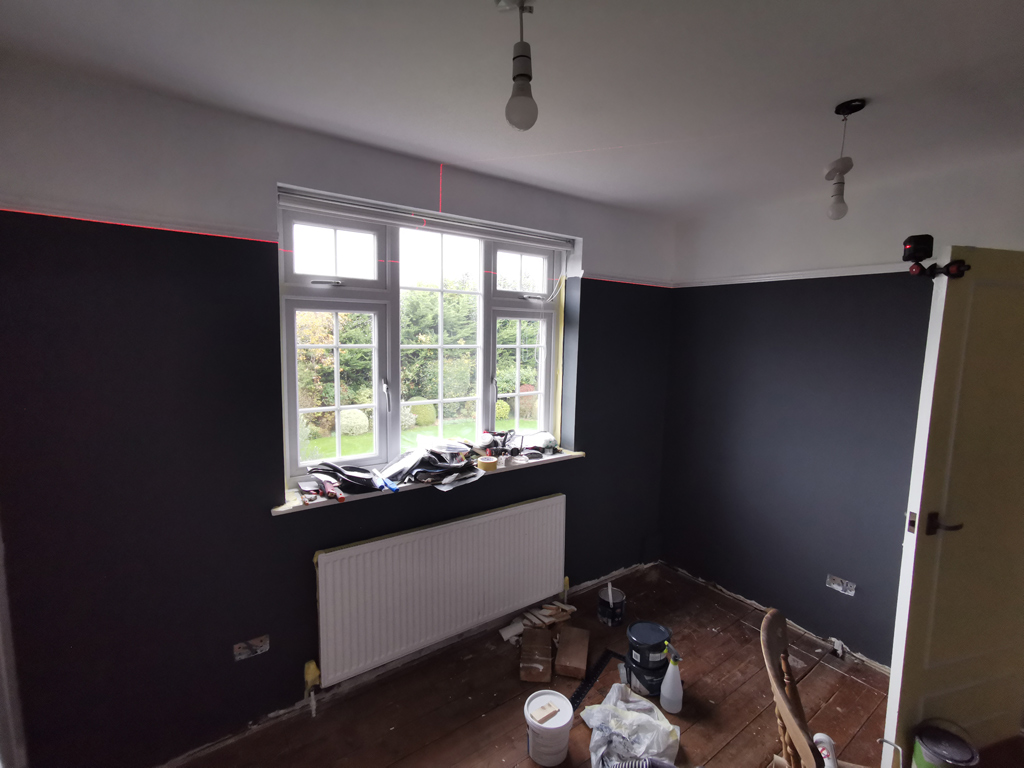You are using an out of date browser. It may not display this or other websites correctly.
You should upgrade or use an alternative browser.
You should upgrade or use an alternative browser.
What "man jobs" have you done today?
- Thread starter jaybee
- Start date
More options
Thread starter's postsThe Mrs asked for some new shelves in the airing cupboard two years ago after they were ripped out for the cylinder change, and today I finally finished the job 
It was actually surprisingly difficult, I used the existing batons on the wall which are quite narrow, and it made it awkward to get screws in (I don't own any nails).
I put a rail in there for hangers. Is it worth treating the wood with something?


It was actually surprisingly difficult, I used the existing batons on the wall which are quite narrow, and it made it awkward to get screws in (I don't own any nails).
I put a rail in there for hangers. Is it worth treating the wood with something?

Soldato
- Joined
- 28 Dec 2017
- Posts
- 9,382
- Location
- Beds
Yep, been meaning to map out the flow around the house. At least some of it is in parallel as it branches directly from the boiler. Don't know if straight zoning would be beneficial but deffo worth considering e.g. ground floor with utility and garage is almost never going to need heating after work hours...I'm no expert but I'd say you need to learn how the rads flow to make any semblance of a saving. Maybe knock some off and see which ones still get warm and how quickly. In a 3 story town house (I think that's what you have?) It may be worth getting a plumber in to zone it off so you have two stats?
Edit: the stats can "request" heat as well, so for rooms you are particularly bothered about, e.g. nursery in my case, it can switch the heating on and then all the other TRVs close to avoid overheating the house.
The Mrs asked for some new shelves in the airing cupboard two years ago after they were ripped out for the cylinder change, and today I finally finished the job
It was actually surprisingly difficult, I used the existing batons on the wall which are quite narrow, and it made it awkward to get screws in (I don't own any nails).
I put a rail in there for hangers. Is it worth treating the wood with something?

No treatment needed really, just make sure the wood is dry before fixing down. If wet it could shrink and split, but it looks dry from the photo's.
Additional measures to try to keep some of the heat in. Used some left over underlay to add a bit of insulation to an a internal/external door (the outer space is much colder).
Added the lower pad because the dogs always scratch that spot when they want to come in, and this stuff is pretty delicate.

Added the lower pad because the dogs always scratch that spot when they want to come in, and this stuff is pretty delicate.

Screwed some wood to the wall, to support a worktop.
Spent too much time making sure the holes were all nicely equal in the piece of wood and not enough time thinking about what was behind the holes...yep i almost drilled through some electrical cables that I knew were there (i plastered over them..)
Need to be very careful what I do now as I've used up a few months worth of luck...
Spent too much time making sure the holes were all nicely equal in the piece of wood and not enough time thinking about what was behind the holes...yep i almost drilled through some electrical cables that I knew were there (i plastered over them..)
Need to be very careful what I do now as I've used up a few months worth of luck...
Additional measures to try to keep some of the heat in. Used some left over underlay to add a bit of insulation to an a internal/external door (the outer space is much colder).
Added the lower pad because the dogs always scratch that spot when they want to come in, and this stuff is pretty delicate.

I've done something similar before in a previous house, I used some stuff you can stick to the windows & old fire opened place and then use a hairdryer to shrink the stretched material is it's taught. It was transparent and worked for the purpose.
You can also use a curtain across doorways too. We have those and they work well. Only issue is we've redone the kitchen so I think the better option is a new door that has double glazed glass.
Soldato
- Joined
- 7 Sep 2020
- Posts
- 3,839
- Location
- Gods Country
40mm is normally waste water and not toilet waste…….what waste are you plumbing?? Sink, bath or toilet???Doing a bathroom but what fitting do I need to get into this with a 40mm waste. Most soil pipe bosses are 67mm and so this has me stumped
Kitchen sink with a washing machine. It’s a hunter downpipe and I seem to have found the part but no where I can just pickup. Needs rotating to the wall after I cut the hole.
https://www.jtatkinson.co.uk/hunter...MI8uSQwNjO-wIVz9LtCh2YmwDLEAQYAiABEgJgJPD_BwE
https://www.jtatkinson.co.uk/hunter...MI8uSQwNjO-wIVz9LtCh2YmwDLEAQYAiABEgJgJPD_BwE
Ive fitted my boxing and skirting board in bathroom.
The one skirting external mitre isn't the neatest as I couldn't work out how to get an acute external mitre... (I also don't have an angle measurer)
Unfortunately after fitting I realised my stop tap is leaking! I think it's leaking from the gland nut but might leave a couple of weeks for the Plunber to fix whilst he's here... (pending how much its leaking)

Was a right pain but got a router to profile around the stop tap cover. Also had to turn the water off to get this section over the capped end for the toilet (think the plumber thought id use shorter skirting....)





The one skirting external mitre isn't the neatest as I couldn't work out how to get an acute external mitre... (I also don't have an angle measurer)
Unfortunately after fitting I realised my stop tap is leaking! I think it's leaking from the gland nut but might leave a couple of weeks for the Plunber to fix whilst he's here... (pending how much its leaking)

Was a right pain but got a router to profile around the stop tap cover. Also had to turn the water off to get this section over the capped end for the toilet (think the plumber thought id use shorter skirting....)





Pretty sure you can get all those types of bits for standard size piping at b&q / homebase.Kitchen sink with a washing machine. It’s a hunter downpipe and I seem to have found the part but no where I can just pickup. Needs rotating to the wall after I cut the hole.
https://www.jtatkinson.co.uk/hunter...MI8uSQwNjO-wIVz9LtCh2YmwDLEAQYAiABEgJgJPD_BwE
Kitchen sink with a washing machine. It’s a hunter downpipe and I seem to have found the part but no where I can just pickup. Needs rotating to the wall after I cut the hole.
https://www.jtatkinson.co.uk/hunter...MI8uSQwNjO-wIVz9LtCh2YmwDLEAQYAiABEgJgJPD_BwE
Not sure if a requirement or not, but fitted non return valves to mine before it entered the main waste pipe.

McAlpine T28M-NRV Non-Return Valve White 40mm - Screwfix
Order online at Screwfix.com. 40mm non-return valve for domestic and commercial use. FREE next day delivery available, free collection in 1 minute.

Making progress in the new spare room. Painted and picture rail fitted.
I'm giving myself negative points for not removing the radiator, considering how much other plumbing I've done in the room. I'll paint behind it properly once I've had a bit of a tidy.
Soldato
- Joined
- 2 May 2011
- Posts
- 12,192
- Location
- Woking
I'm no expert but I'd say you need to learn how the rads flow to make any semblance of a saving. Maybe knock some off and see which ones still get warm and how quickly. In a 3 story town house (I think that's what you have?) It may be worth getting a plumber in to zone it off so you have two stats?
Edit: the stats can "request" heat as well, so for rooms you are particularly bothered about, e.g. nursery in my case, it can switch the heating on and then all the other TRVs close to avoid overheating the house.
The purpose of the Tado heads is to give you room-by-room control. What they will never do is balance your system for you, which is something that people need to do desperately. I've managed to double my dT this week, from 8C to about 14C, which is a big improvement. With Tado, you're not increasing efficiency in any way, just cutting off heat sources to rooms.
Soldato
- Joined
- 27 Mar 2013
- Posts
- 9,380
I would have thought you could balance with trvs, or do you set them to max then regulate the locks hired, then set the trv to you preferred setting?The purpose of the Tado heads is to give you room-by-room control. What they will never do is balance your system for you, which is something that people need to do desperately. I've managed to double my dT this week, from 8C to about 14C, which is a big improvement. With Tado, you're not increasing efficiency in any way, just cutting off heat sources to rooms.



